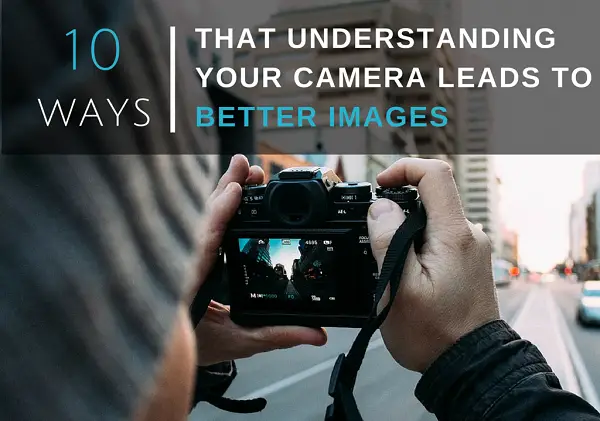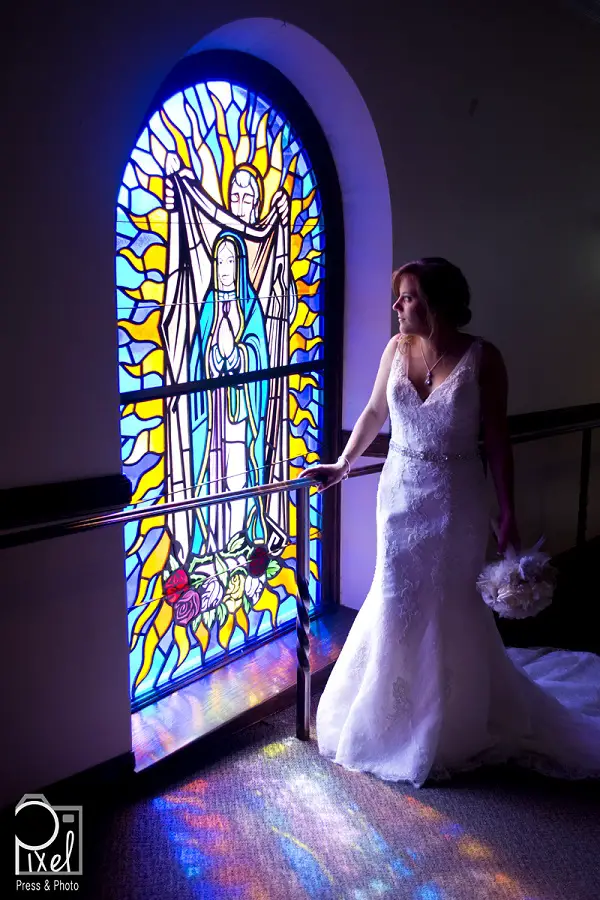Perhaps you’ve heard this one before, or said even it yourself: I could take great pictures too, if I had your camera.

But saying pictures are great because of the camera is like saying Michael Jordan was great because of his shoes. Sure, the camera determines an image’s resolution, but give a $7,000 camera to a toddler and you’ll have a high resolution blur.
In reality, a camera is only as good as the person behind it. You don’t necessarily need a better camera to take better pictures — often, simply discovering the features inside the camera you already own can make a big impact on your photography.
1. Understanding your camera allows you to get great photos in the toughest scenarios.
Sometimes, a camera’s automated mode will take a pretty decent picture. But most of the time, that’s not the case. On auto, the camera’s built-in meter measures the light, but assumes everything is a middle gray. Of course, if everything in the image isn’t gray, there’s a good chance the exposure will be off.
In a scene with a lot of white, like a snowy landscape or a bridal portrait, the camera thinks there’s more than light then there really is, so the photos end up being too dark. The opposite is true for scenes with a lot of black. Understanding exposure and manual modes allows you to shoot in scenarios where auto fails miserably (and there’s quite a few of them).

2. Understanding your camera allows you to shoot in any light.
Along with measuring light based on color, the camera’s automated mode measures light from the entire scene. In an evenly lit scene, that’s not a problem. But high contrast scenes are a different story.
Take the classic example of taking a portrait at sunset. Most of the image is likely filled by that bright, dramatic sky, with the person only taking up a small part of the picture. On auto, the camera is going to turn the person into a black silhouette. Why? Since the bright sky takes up most of the frame, the camera choose the best exposure settings for the sky, and since the sky is so bright, it leaves the person shadowy.
Any high contrast scene isn’t going to photograph well on auto. Grasping the basics of metering modes allows you to choose how the camera reads the scene, so you can shoot in any light.
3. Understanding your camera allows you to eliminate blur—or blur on purpose.
Novice photographers become frustrated with blurry photos, but great photographers know how to use blur as a tool instead of a flaw. Motion blur is created from using a shutter speed that’s too slow. The shutter lets in light, and the longer the shutter is open, the more light that is captured in the photo.

That’s why a camera’s automated mode often takes blurry pictures in dim interiors or at night.
Understanding a camera’s shutter speed (and how that balances out with ISO and aperture) allows photographers to freeze action when they want to. Knowing that same concept allows photographers to blur the water rushing down a waterfall or to capture a sharp race car with a blurred background.
4. Understanding your camera helps you capture a sharp focus, every time.
If you haven’t caught on by now, anything auto doesn’t yield the best results. Autofocus is the same way—sort of. Except for a few scenarios like macro photography, using autofocus will usually get good results. But, to get great photos from autofocus, you need to understand autofocus modes. The default autofocus mode will focus on either what’s in the center of the frame, or on what’s closest to the camera.
Using the single point autofocus mode allows you to choose where the autofocus locks on—it’s a great mode for portraits and other shots where you want a precise focus. Dynamic autofocus (sometimes called AF Point Expansion) also allows you to choose the focus point, but once you focus, the point will move if the subject moves—this is a great mode for shooting sports and wildlife.

Besides choosing where to focus, autofocus modes also determine when to focus. Single AF focuses once, when you press the shutter release button halfway, and it’s best for stationary subjects.
Continuous or Al Servo will continue to adjust the focus as long as the shutter release is being pressed, so it’s great for shooting action.
5. Understanding your camera allows you to choose how much of the image is in focus.
There’s more to getting sharp shots than just choosing the right shutter speed and autofocus mode.

Aperture, or the size of the opening in the lens determines how much of the image is in focus—the technical term is depth of field. A low f-number, like f/1.8 means a wide open aperture. Along with letting you use higher shutter speeds, wide apertures will effectively blur out the background.
Wide apertures are commonly used in portraits to eliminate distractions from the background. But, go too wide, and some of your subject could be out of focus too, especially if you are up close. To get more of the image in focus, higher numbers like f/11 are used, typically for landscape photography and other photos where background blur isn’t desired.
6. Understanding your camera allows you to capture sharp photos.
Wait, didn’t we just talk about focus, depth of field and blur? There can be more to capturing a sharp shot than just the basics that even experienced enthusiasts may not realize. Each lens will have a “sweet spot” or an aperture that produces the sharpest results. Separate from depth of field, the sweet spot is sharper at the in-focus areas and isn’t related to how much of the image is in focus. Usually, a lens’ sweet spot is 2.5 to three stops narrower than the maximum. A f/2.8 lens, for example, is likely the sharpest between f/5.6 and f/8.
7. Understanding your camera allows you to capture better color.
Color can often make or break a photo. Getting realistic colors is all about understanding white balance. By matching your white balance settings to the type of light that you are shooting in, you’ll get the most accurate results. You can also intentionally mismatch the white balance to create a warmer or more orange feel to an image, or a cooler blue tone. Using the “wrong” white balance can be effective when shooting sunsets, especially when the rest of the photo is a silhouette so the colors don’t appear off.

There’s a bit more to getting good color than white balance though. Film photographers know that different types of film yield softer or more dramatic colors. The digital equivalent is referred to as color management settings. (Each brand will have a slightly different term, Nikon uses Picture Controls, for example.) By going into the camera’s menu and adjusting the color settings, you can achieve more vivid or muted colors, or even black and white, before you even edit the images.
8. Understanding your camera opens up possibilities for advanced techniques.
Even photographers that have a solid grasp of basics like exposure and focus techniques probably have a few hidden gems inside their camera that they don’t realize. Does your camera offer bracketing?
RAW shooting? What about double exposures? Panoramas? HDR? If you’ve never read your camera’s manual, even if you’ve owned it for a few years, take a look—you may be surprised at the helpful features you never even realized you already had.
9. Understanding your camera unleashes creative opportunities.
Once you’ve got the basic concepts down, you can use them for more than just preventing common issues. Understanding shutter speed allows you to prevent blur, but it also opens up the possibility of
creating unique photos with the panning technique. With aperture down pat, you can both get the right exposure and choose how much of the background is in focus. Knowing how to use metering to prevent silhouettes gives you an edge when you actually want to create a silhouette.
10. Knowing your particular camera prevents you from missing the moment.
Photographers that are unfamiliar with their camera spend more time looking for the right controls and checking their images on the LCD screen, potentially missing great moments as they unfold because they’re too busy fiddling with controls. Get acquainted with your camera like it’s your best friend, and you can adjust most of the settings without pulling your eye off the viewfinder. With enough experience with manual modes and other shooting settings, you can shoot with confidence, only occasionally checking the LCD.
The gear you use matters, but not quite in the way most people think. The camera determines the resolution of the image, the range of shutter speed options as well as factors like the speed of the burst mode. The lens determines the range of aperture settings and focal lengths you have at your disposal.
And upgrading an older camera usually offers improvements in noise reduction. But, if you don’t know how to use the camera, getting a new one isn’t going to help. Explore basics like manual modes and focus modes, and take a look at your camera’s manual—you may find the camera you have is better than you think.
What about you? What trick or tip helped you to get the most out of your camera?









5 comments